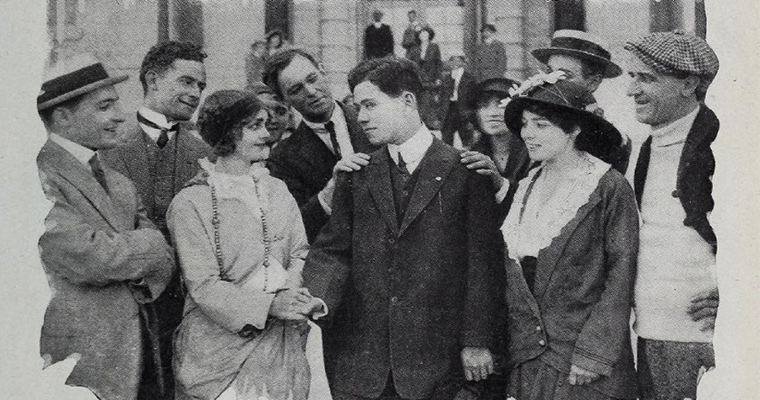Professor Denise Khor receives grant to preserve the earliest Asian American Film Production

American Studies Professor Denise Khor is on a mission to preserve the early history of Asian American cinema.
While researching her book, Transpacific Convergences: Race, Migration, and Japanese American Film Culture before World War II (forthcoming from University of North Carolina Press), Khor started compiling a list of early films made by Japanese Americans, culled from historical newspapers and other ephemera, but until recently had never identified a surviving print to watch herself.
“The vast majority of films that were produced in the silent film era have not survived because they have just deteriorated or combusted without the intervention of film preservation,” she said. “Eighty percent of silent films from that era have been lost to history.”
After months of coming up empty handed, she received a surprising email. The only surviving print of the 1914 film The Oath of the Sword was found at the George Eastman Museum in Rochester, New York, home to one of the world’s oldest film archives. In 2016, Khor boarded a plane to Rochester and watched the rare film for the first time on a flatbed in the museum, she said.
“The original materials were held in a vault. There was a safety print made in 1980 and that’s all there is,” Khor said. “There was so much that was unknown about the film, but I was able to put together some of the pieces.”
The Oath of the Sword is a three-reel silent drama about an ambitious young man leaving behind his beloved in Japan to study abroad at the University of California. The movie had an all-Japanese cast and was made by the Japanese American Film Company, a company based in Los Angeles and led by Japanese immigrants.
“The film was really interesting and it’s so powerful to have,” she said. “It’s very much a western story of the east with the fallen Japanese woman and this interracial romance. There’s also this kind of narrative around racial uplift that I think is being addressed within the film.”
Khor said at the time this film was made, the Japanese American community in the United States responded to the anti-Japanese movement, in part, by engaging in campaigns around respectability.
“The main Japanese character who studies abroad in the U.S. is an excellent student at U.C. Berkeley, so popular, and he’s a star athlete. In some sense, there’s an image of respectability being put forth,” she said. “I think that the sort of complexity of those perspectives is really quite wonderful in this film.”
Following her discovery, Khor put together a team, including the George Eastman Museum and the Japanese American National Museum in Los Angeles, California, to apply for a grant from the National Film Preservation Foundation.
“We all worked on the application together in this beautiful, amazing collaborative process that I think is going to yield such an important and significant development in terms of American film history, Asian American film history, and in terms of the legacy of filmmaking, independent filmmaking, and filmmaking at large, so it’s just so exciting,” she said.
Earlier this year, Khor and her team were awarded the grant to preserve The Oath of the Sword. Khor said it’s their hope that through preserving the film, it will get a revived public life and that new audiences will be able to see it.
“For a long time, film preservation efforts were really focused on masterpieces and classics that were produced by Hollywood or big corporate studios. Other kinds of filmmaking were just not regarded and not valued as something to be preserved,” she said. “It’s especially important because at the time this film was made in 1914, it had a very limited circulation. The company that had produced it didn’t have as many resources as big film studios.”
The George Eastman Museum will oversee the preservation process, restoring the original tinting to the print and producing a 35mm restored print with a digital master copy. The movie will be stored at the George Eastman Museum and the Japanese American National Museum, which also has plans to incorporate it into their core exhibit.
“The Japanese American National Museum was part of the conversations on film preservation that helped pass the National Film Preservation Act of 1992. It comes full circle in this amazing way,” she said. “We’re looking for it to be completed by next year and what’s exciting is being able to bring it to film festivals, public exhibitions, and theaters near you. Being able to engage new audiences around the film is what I’m so looking forward to. To see it on the big screen is going to be amazing. I can’t wait to screen the film on campus here at UMass Boston.”
As an American Studies professor, Khor taught a class last year that focused on Asian American cinema, which was developed with the support of a Mellon Foundation Grant. Through the grant, she was able to connect with the Boston Asian American Film Festival and talked about the value of being able to bring a different film history perspective to her students.
“Being able to work through a lot of ideas with my students, think about Asian American cinema and film history and be engaged with Asian American cinema today with the film festival that we have right here in Boston, those are the kinds of synergistic connections that I love,” Khor said.